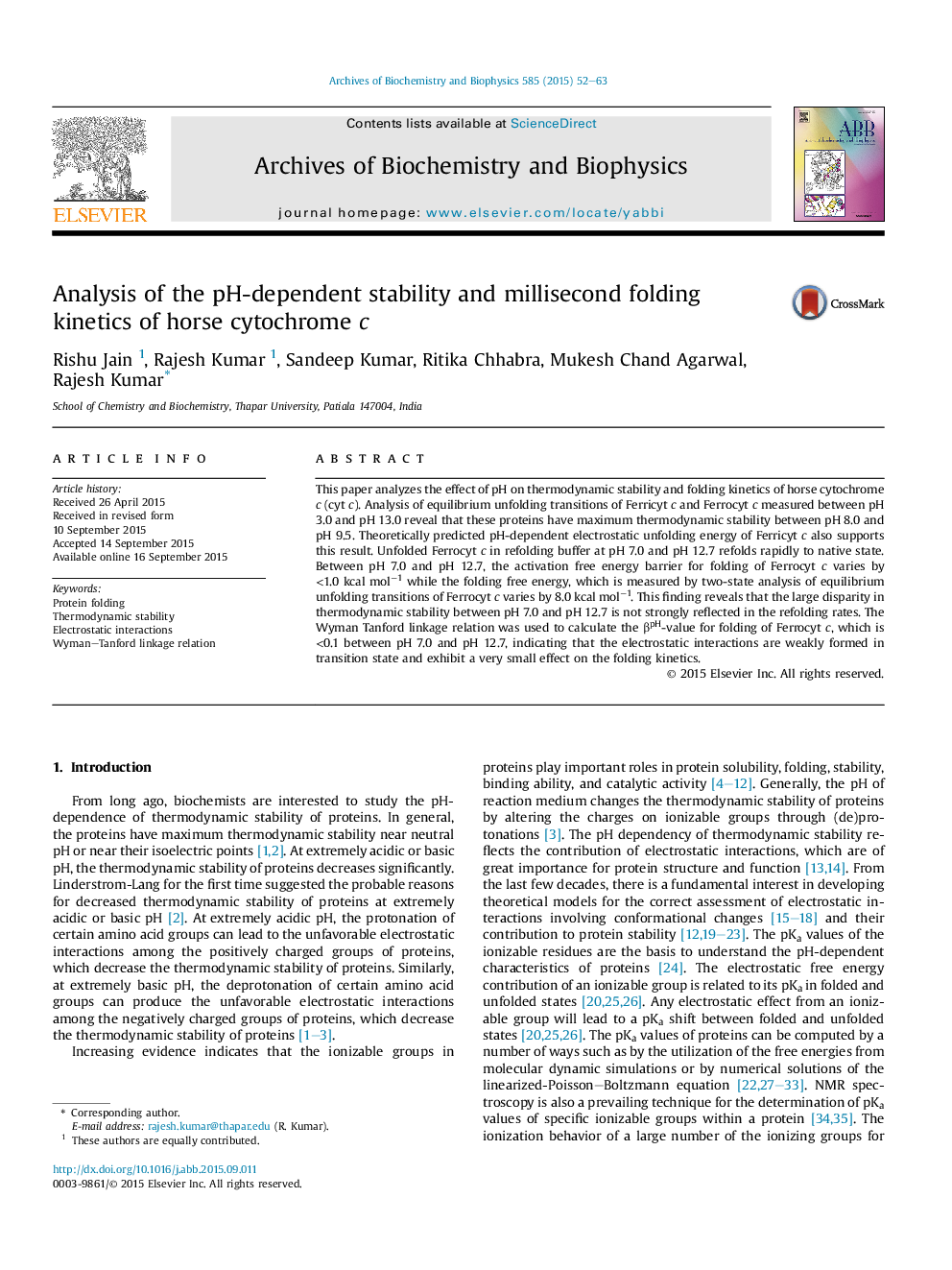| Article ID | Journal | Published Year | Pages | File Type |
|---|---|---|---|---|
| 1924842 | Archives of Biochemistry and Biophysics | 2015 | 12 Pages |
•Ferricyt c and Ferrocyt c are maximally stable between pH 8 and 9.5.•Ferricyt c has maximum thermodynamic stability near its isoelectric point.•Electrostatic interactions have significant effect on overall stability of cyt c.•Electrostatic interactions exhibit small effect on folding kinetics of cyt c.
This paper analyzes the effect of pH on thermodynamic stability and folding kinetics of horse cytochrome c (cyt c). Analysis of equilibrium unfolding transitions of Ferricyt c and Ferrocyt c measured between pH 3.0 and pH 13.0 reveal that these proteins have maximum thermodynamic stability between pH 8.0 and pH 9.5. Theoretically predicted pH-dependent electrostatic unfolding energy of Ferricyt c also supports this result. Unfolded Ferrocyt c in refolding buffer at pH 7.0 and pH 12.7 refolds rapidly to native state. Between pH 7.0 and pH 12.7, the activation free energy barrier for folding of Ferrocyt c varies by <1.0 kcal mol−1 while the folding free energy, which is measured by two-state analysis of equilibrium unfolding transitions of Ferrocyt c varies by 8.0 kcal mol−1. This finding reveals that the large disparity in thermodynamic stability between pH 7.0 and pH 12.7 is not strongly reflected in the refolding rates. The Wyman Tanford linkage relation was used to calculate the βpH-value for folding of Ferrocyt c, which is <0.1 between pH 7.0 and pH 12.7, indicating that the electrostatic interactions are weakly formed in transition state and exhibit a very small effect on the folding kinetics.
Graphical abstractFigure optionsDownload full-size imageDownload high-quality image (188 K)Download as PowerPoint slide
